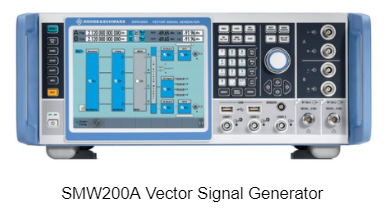Rohde & Schwarz recently announced the development of two new maximum frequencies for the R&S SMW200A vector signal generator. According to the company, the new technology brings previously unattainable high performance to digitally modulated signals up to 67 GHz and beyond. The R&S SMW200A is reportedly the first to enable flat frequency response and 2 GHz modulation bandwidth above 44 GHz. In addition to all applications already supported up to 44 GHz, the 100 kHz to 56 GHz option covers all currently used 5G frequencies, plus earth-to-satellite applications. The 100 kHz to 67 GHz option also supports planned higher frequency 5G bands, the 60 GHz WiGig band, and inter-satellite links.
A maximum modulation bandwidth of 2 GHz is supported, meeting the requirements of even the wider subcarrier spacings defined for 5G FR2 Release 17, and wideband satellite transmissions. The established R&S SMW200A signal qualities including excellent modulation, flat frequency response, and four hardware-based levels of phase noise performance equally apply to the new frequency options.
Applications in the U and V bands now supported include mobile radio, Wireless LAN, and satellite communications. For mobile radio engineers developing RF components and products to support the 5G mobile radio spectrum available in the 47 GHz frequency band already allocated by the FCC to U.S. network operators, the R&S SMW200A with 56 GHz or 67 GHz option is the ideal signal generator. 3GPP Release 17 specifying further enhancements to 5G has reached a well-defined stage, so the developers will be looking for a signal generator to cover the now extended FR2 frequency range from 52.6 GHz up to 71 GHz. The only suitable signal generator currently available is an R&S SMW200A with a 67 GHz frequency option that, according to the company, supports up to 72 GHz in overrange mode.
The new frequency options are usable for high frequency WiFi and Wireless LAN, including IEEE 802.11ad, which operates in the 60 GHz unlicensed band (57-71 GHz). For satellite communication applications, forward and reverse links operate between 37.5 GHz and 52.4 GHz; inter-satellite links use frequencies up to 66 GHz with bandwidths up to 2 GHz.





Reader Interactions